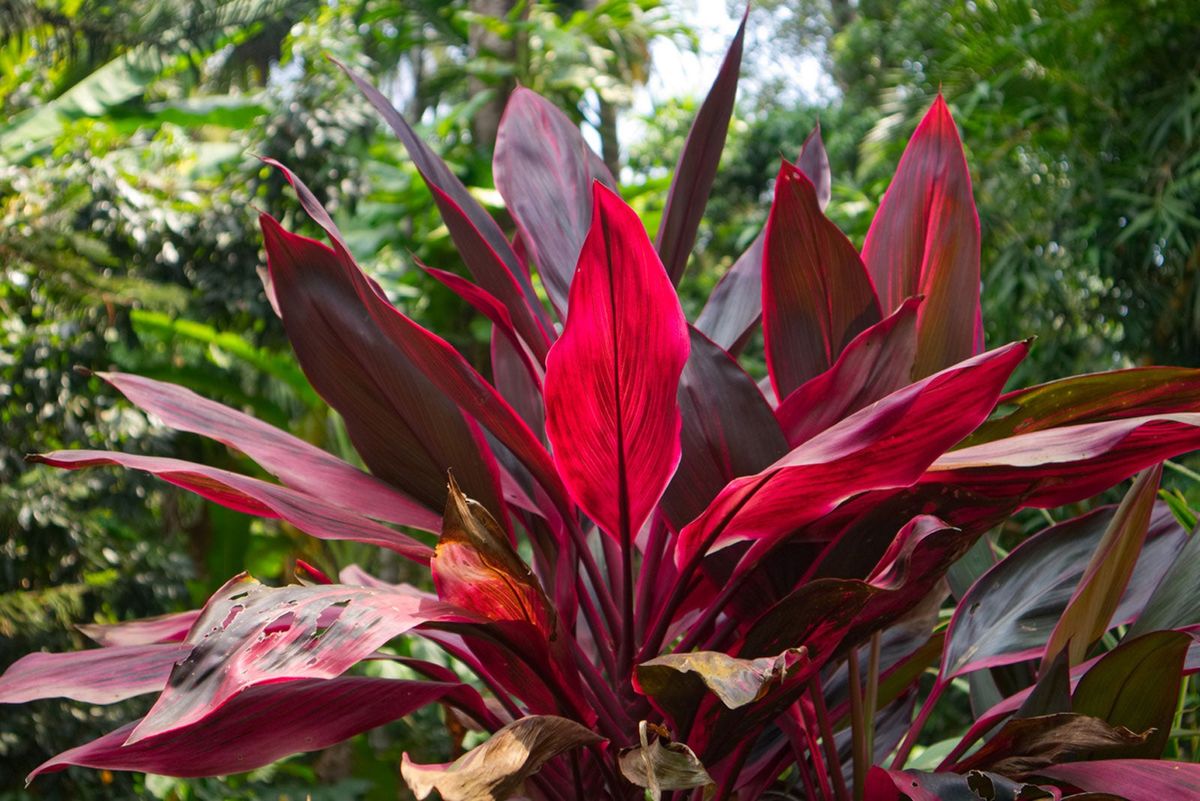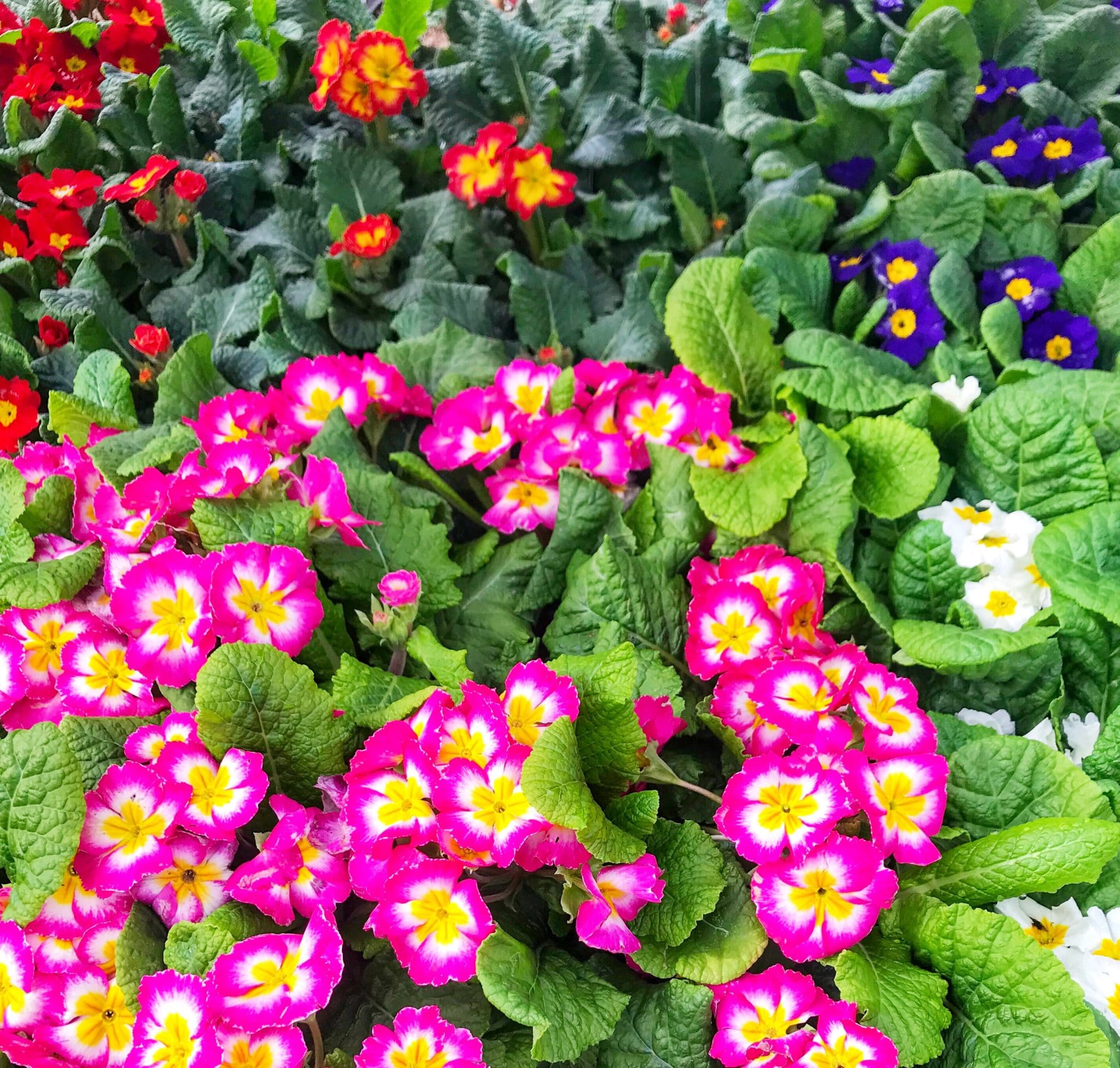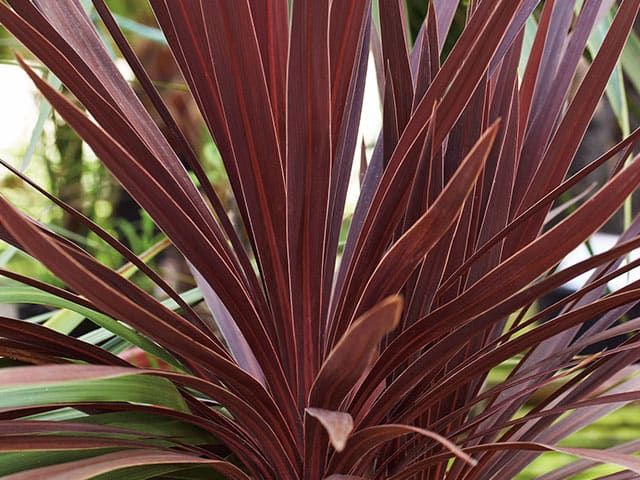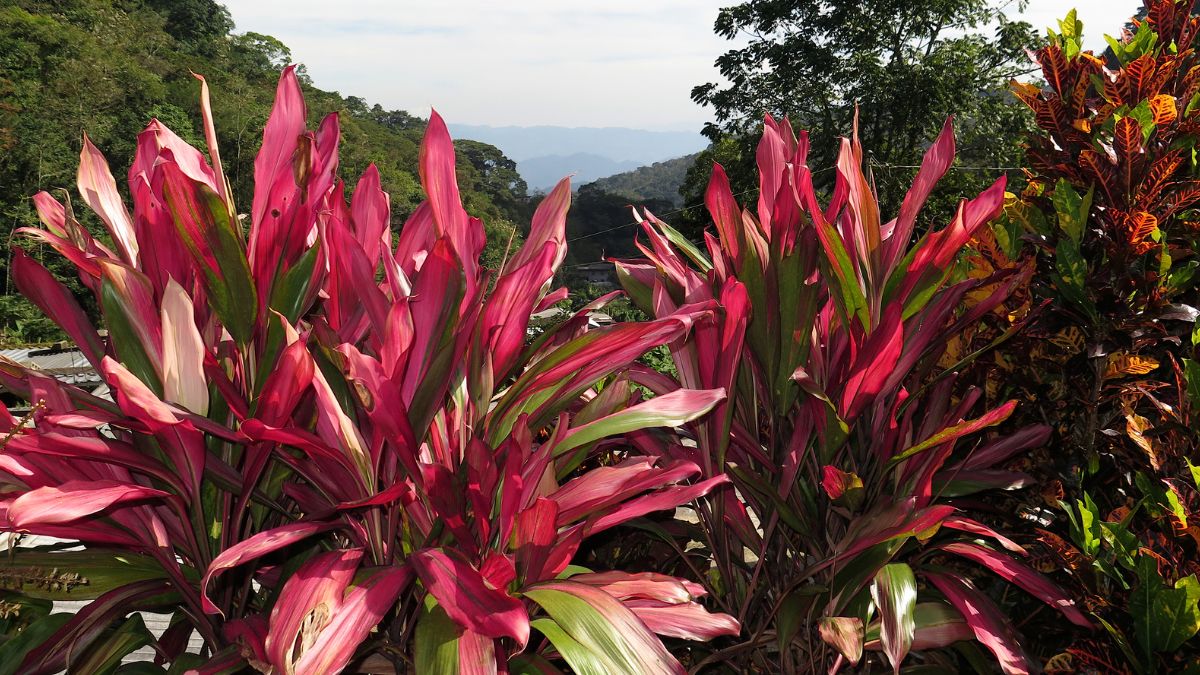What is a Cordyline Plant and How Does it Grow?
Cordyline plants are a type of flowering plant that belongs to the Asparagaceae family. Native to the Pacific Islands and parts of Asia, these plants have been cultivated for centuries for their ornamental value and versatility. Cordyline plants are known for their striking, sword-shaped leaves that can grow up to 3 feet long and 1 inch wide. They come in a variety of colors, including green, red, purple, and yellow, making them a popular choice for gardens and indoor spaces.
When it comes to growing Cordyline plants, they prefer well-draining soil and full sun to partial shade. They thrive in temperatures between 65°F to 95°F (18°C to 35°C) and can tolerate some frost but not prolonged periods of cold. With proper care, Cordyline plants can grow up to 10 feet tall and 3 feet wide, making them a stunning addition to any garden or landscape.
One of the key characteristics of Cordyline plants is their ability to grow from a single stem, producing a crown of leaves at the top. This unique growth habit makes them a popular choice for topiaries and hedges. Cordyline plants also produce small, fragrant flowers in the summer months, which are followed by red or purple berries.
As a gardener, understanding the growth habits and requirements of Cordyline plants is essential to determining whether they are perennials or not. By providing the right conditions and care, Cordyline plants can thrive and provide beauty and interest to gardens and indoor spaces for years to come. The question remains, however, is a Cordyline plant a perennial? To answer this, we need to delve deeper into the world of plant classification and explore the differences between annuals, perennials, and tender perennials.
Understanding the Difference Between Annuals, Perennials, and Tender Perennials
When it comes to plant classification, there are several categories that help gardeners and horticulturists understand the growth habits and characteristics of different species. Three of the most common categories are annuals, perennials, and tender perennials. Understanding the differences between these categories is essential to determining whether a Cordyline plant is a perennial.
Annuals are plants that complete their life cycle within a year. They germinate, grow, produce flowers and seeds, and die all within a single growing season. Examples of annuals include marigolds, petunias, and tomatoes. These plants typically need to be replanted every year to maintain their presence in the garden.
Perennials, on the other hand, are plants that live for more than two years. They often go dormant during the winter months and regrow in the spring. Perennials can be further divided into two subcategories: herbaceous perennials and woody perennials. Herbaceous perennials, such as daylilies and coneflowers, have non-woody stems that die back to the ground in the winter. Woody perennials, such as shrubs and trees, have woody stems that remain above ground year-round.
Tender perennials are plants that are sensitive to frost and cold temperatures. They typically thrive in warmer climates and may need to be brought indoors or protected during the winter months to survive. Examples of tender perennials include coleus, impatiens, and begonias. While tender perennials may not be hardy enough to survive outdoors year-round, they can still be grown as perennials in warmer climates or in containers that can be moved indoors during the winter.
So, where does the Cordyline plant fit into these categories? Is a Cordyline plant a perennial? To answer this question, we need to consider the plant’s growth habits, hardiness, and ability to regrow after the winter months. By understanding the characteristics of Cordyline plants and how they compare to other perennials, we can determine whether they are indeed perennials.
How to Care for Cordyline Plants: Tips for Year-Round Growth
Cordyline plants are relatively low-maintenance, but they still require regular care to thrive. To keep your Cordyline plant healthy and growing year-round, follow these tips:
Watering: Cordyline plants prefer well-draining soil and should be watered thoroughly once a week during the growing season. However, during the winter months, reduce watering to once every 4-6 weeks. Make sure not to overwater, as this can lead to root rot and other problems.
Fertilizing: Feed your Cordyline plant with a balanced fertilizer during the growing season (spring-fall). Dilute the fertilizer to half the recommended strength to avoid burning the roots. You can also use a fertilizer specifically formulated for tropical plants, as Cordyline plants are native to tropical regions.
Pruning: Prune your Cordyline plant regularly to maintain its shape and promote healthy growth. Remove any dead or damaged leaves, and cut back the plant to about 6-8 inches from the ground after it finishes blooming. This will encourage new growth and prevent the plant from becoming leggy.
Lighting: Cordyline plants prefer bright, indirect light but can tolerate some direct sunlight. However, avoid placing the plant in full sun, as this can cause the leaves to become scorched.
Temperature: Cordyline plants prefer temperatures between 65-75°F (18-24°C) during the day and no lower than 55°F (13°C) at night. Avoid placing the plant near drafts or extreme temperatures.
Humidity: Cordyline plants prefer a relatively high humidity, but they can adapt to average humidity levels. To maintain humidity, you can place the plant on a tray filled with water and pebbles or use a humidifier.
By following these care tips, you can keep your Cordyline plant healthy and thriving year-round. Remember to monitor your plant’s specific needs and adjust your care routine accordingly. With proper care, your Cordyline plant will reward you with beautiful foliage and vibrant colors.
Is a Cordyline Plant a Perennial? The Answer Revealed
After understanding the characteristics of Cordyline plants and the differences between annuals, perennials, and tender perennials, it’s time to answer the question: is a Cordyline plant a perennial?
The answer is yes, Cordyline plants are perennials. They are capable of living for more than two years and can regrow new leaves and stems year after year. In fact, Cordyline plants can live for up to 10 years or more in ideal conditions.
One of the key reasons why Cordyline plants are considered perennials is their ability to regrow new leaves and stems from the same root system. This means that even if the plant dies back during the winter months, it will regrow in the spring from the same roots.
Additionally, Cordyline plants have a unique growth habit that allows them to produce new stems and leaves from the center of the plant. This means that even if the outer leaves die back, the plant will continue to produce new growth from the center.
While Cordyline plants are perennials, they can be sensitive to frost and cold temperatures. In areas with harsh winters, it’s best to bring the plant indoors or protect it from frost to ensure its survival.
In conclusion, Cordyline plants are indeed perennials, and with proper care and protection, they can thrive for many years. By understanding the characteristics of Cordyline plants and providing them with the right conditions, you can enjoy their beautiful foliage and vibrant colors for years to come.
How to Overwinter Cordyline Plants: A Step-by-Step Guide
Overwintering Cordyline plants can be a bit tricky, but with the right steps, you can protect your plant from frost and cold temperatures and bring it back to life in the spring. Here’s a step-by-step guide on how to overwinter Cordyline plants:
Step 1: Bring the Plant Indoors
Before the first frost, bring your Cordyline plant indoors to a bright and cool location. This will help protect the plant from frost and cold temperatures.
Step 2: Reduce Watering
Reduce watering to once a month during the winter months. This will help prevent the plant from becoming too wet and developing root rot.
Step 3: Provide Humidity
Cordyline plants prefer a relatively high humidity, so make sure to provide humidity around the plant during the winter months. You can place the plant on a tray filled with water and pebbles or use a humidifier.
Step 4: Maintain Temperature
Keep the temperature around the plant between 40-50°F (4-10°C) during the winter months. This will help slow down the plant’s growth and prevent it from becoming too stressed.
Step 5: Prune the Plant
Prune the plant back to about 6-8 inches from the ground after it finishes blooming. This will help encourage new growth and prevent the plant from becoming leggy.
Step 6: Monitor for Pests
Monitor the plant for pests such as spider mites, mealybugs, and scale. If you notice any pests, treat the plant with insecticidal soap or neem oil.
By following these steps, you can successfully overwinter your Cordyline plant and bring it back to life in the spring. Remember to be patient and provide the right conditions for your plant to thrive.
Common Mistakes to Avoid When Growing Cordyline Plants
While Cordyline plants are relatively easy to care for, there are some common mistakes that people make when growing them. By avoiding these mistakes, you can help keep your Cordyline plant healthy and thriving.
Overwatering: One of the most common mistakes people make when growing Cordyline plants is overwatering. This can lead to root rot and other problems. To avoid overwatering, make sure to check the soil moisture regularly and only water the plant when the soil feels dry to the touch.
Underwatering: On the other hand, underwatering can also be a problem for Cordyline plants. If the soil is too dry for too long, the plant may become stressed and develop brown tips on the leaves. To avoid underwatering, make sure to water the plant regularly, but avoid getting the leaves wet.
Insufficient Light: Cordyline plants prefer bright, indirect light, but they can tolerate some direct sunlight. However, if the plant is not getting enough light, it may become leggy and develop weak growth. To avoid this, make sure to place the plant in a location that receives plenty of light.
Too Much Fertilizer: While fertilizer can be beneficial for Cordyline plants, too much of it can be detrimental. Avoid using high-nitrogen fertilizers, as they can cause the plant to become leggy and develop weak growth. Instead, use a balanced fertilizer that is specifically formulated for tropical plants.
Not Pruning: Pruning is an essential part of caring for Cordyline plants. By pruning the plant regularly, you can help maintain its shape and promote healthy growth. Avoid pruning the plant too much, as this can cause stress and lead to disease.
By avoiding these common mistakes, you can help keep your Cordyline plant healthy and thriving. Remember to always monitor your plant’s specific needs and adjust your care routine accordingly.
Propagating Cordyline Plants: A Guide to Dividing and Potting
Propagating Cordyline plants is a great way to share these beautiful plants with friends and family, or to create new plants for your own garden. One of the easiest ways to propagate Cordyline plants is through division and potting.
Division is a simple process that involves separating the roots of the plant into smaller sections, each with its own set of leaves. To divide a Cordyline plant, start by carefully removing the plant from its pot and gently washing away the soil from the roots. Use a sharp, sterile knife or pruning tool to separate the roots into sections, making sure each section has at least one growing stem and a few leaves.
Once you have divided the roots, pot each section in a new container filled with well-draining potting mix. Water the soil gently but thoroughly, and provide the new plants with bright, indirect light. Keep the soil consistently moist but not waterlogged, and fertilize the plants regularly to promote healthy growth.
Another way to propagate Cordyline plants is through stem cuttings. To take a stem cutting, choose a healthy stem with at least two nodes (the joints where the leaves meet the stem). Cut the stem just below a node, using a sharp, sterile knife or pruning tool. Remove any lower leaves that will be below the soil line, and dip the cut end of the stem in rooting hormone powder or liquid.
Plant the stem cutting in a pot filled with well-draining potting mix, and water the soil gently but thoroughly. Provide the cutting with bright, indirect light, and keep the soil consistently moist but not waterlogged. Roots should develop within a few weeks, and the new plant will begin to grow.
By following these simple steps, you can easily propagate Cordyline plants and share them with others or create new plants for your own garden.
Conclusion: Unlocking the Full Potential of Your Cordyline Plant
In conclusion, Cordyline plants are indeed perennials, and with the right care and attention, they can thrive for many years. By understanding the differences between annuals, perennials, and tender perennials, and by following the tips and advice provided in this article, you can unlock the full potential of your Cordyline plant.
Whether you’re a seasoned gardener or just starting out, Cordyline plants are a great choice for adding a touch of tropical beauty to your garden or indoor space. With their striking, sword-shaped leaves and vibrant colors, they’re sure to be a standout in any setting.
By following the steps outlined in this article, you can keep your Cordyline plant healthy and thriving throughout the year. From watering and fertilizing to pruning and propagating, we’ve covered it all. And with our guide to overwintering Cordyline plants, you can enjoy their beauty even in the coldest of months.
So why not give Cordyline plants a try? With their low-maintenance requirements and stunning good looks, they’re the perfect choice for anyone looking to add a little tropical flair to their garden or indoor space. And with the tips and advice provided in this article, you’ll be well on your way to unlocking the full potential of your Cordyline plant.







